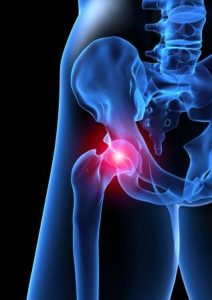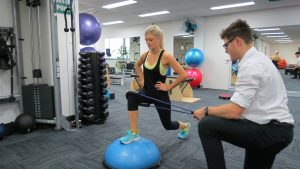Hip Pain – Symptoms, Diagnoses and Treatment
Hip pain affects many activities of daily living and can be debilitating. It is commonly resultant from sporting participation in twisting and pivoting sports such as soccer and football, although can present due to long distance running and even in the older, sedentary population. Commonly, hip pain is of a gradual onset with the slow development of symptoms affecting movement and strength, with the final product being pain. This said though, a sharp twisting movement or a fall onto one leg can result in a hip injury.
Common symptoms include;
- Pain with bending movements
- Stiffness in the mornings
- Pain getting in and out of the car
- Inability to run or play sport without symptoms
- General ache in the hip when at rest
- Pinching or catching with movement
- Inability to lay on the affected hip in bed
- General weakness in the leg and hip
Common Diagnoses;
- Trochanteric bursitis – This form of hip pain is characterised by a diffuse ache over the lateral part of the hip (and sometimes down the leg), with increased symptoms when lying on the affected hip. It is commonly aggravated by prolonged periods of standing and walking and also by traversing up and down stairs. The development of trochanteric bursitis occurs due to weakness of the gluteus medius and minimus muscles, resulting in compression of the overlying bursa and causing pain. Treatment of this condition involves strengthening of the gluteal muscles to take pressure off the bursa.
- Gluteus medius/minimus tendinopathy – Tendon issues of the gluteal muscles results in lateral or posterior hip pain. Commonly, it is related to sporting participation in endurance events, such as marathons, due to the repetitive nature of the sports and the high amounts of stress placed on the body. Pain is commonly associated with running and physical activity, and be particularly sore in the mornings, and the day after exercise.
- Adductor tendinopathy – Groin pain results due to overload of the adductor muscles because of poor muscle strength and control of the hip musculature, in particular the gluteal muscles. This pathology is most commonly seen in pivoting and twisting sports like football and soccer, with symptoms such as weakness, lack of power and lack of flexibility common. Resolution of this pain focuses on improving the strength of the muscles surrounding the hip to take load off the strained adductors.
- Hip Impingement – Impingement of the hip is characterised by a pinching or catching sensation in the anterior hip with bending movements. It can result due to anatomical issues around the hip, or due to an injury of the labrum. Treatment aims to decrease the compression of the affected area in the hip, address biomechanical issues which are contributing and strengthen the surrounding muscles.
Issues relating to biomechanics are common drivers of hip pain. This becomes apparent as we try to increase our training load or try a different type of exercise, as it places more pressure through structures in the hip, causing them to become overloaded and produce pain. Depending on which sport you partake in and your age, the type of hip pain can vary as described earlier.
Achieving the correct diagnosis with hip pain is crucial to achieving complete resolution. Having your hip pain assessed by a physiotherapist will correctly identify the diagnosis, allowing the provision of the correct treatment through technique such as massage, trigger point therapy, dry needling, joint mobilizations and stretching. As mentioned earlier, biomechanical issues contribute to most forms of hip pain and this will differ between each individual. Physiotherapy will identify which movements require correcting, and prescribe strength and motor control exercises to correct biomechanical deficiencies.
Without strengthening or control exercises, there would not be a full recovery of symptoms, increasing the chances of developing persistent hip injuries.
 Written by Matt Fulco. Through the completion of extensive post graduate professional development, Matt demonstrates a very high level of knowledge and skill for his age. He has a very well rounded skill set that enables him to accurately assess and diagnose a vast range of injuries and implement the best evidence based treatments available.
Written by Matt Fulco. Through the completion of extensive post graduate professional development, Matt demonstrates a very high level of knowledge and skill for his age. He has a very well rounded skill set that enables him to accurately assess and diagnose a vast range of injuries and implement the best evidence based treatments available.
If you’re suffering any pain book into see Matt by checking is availability below.












